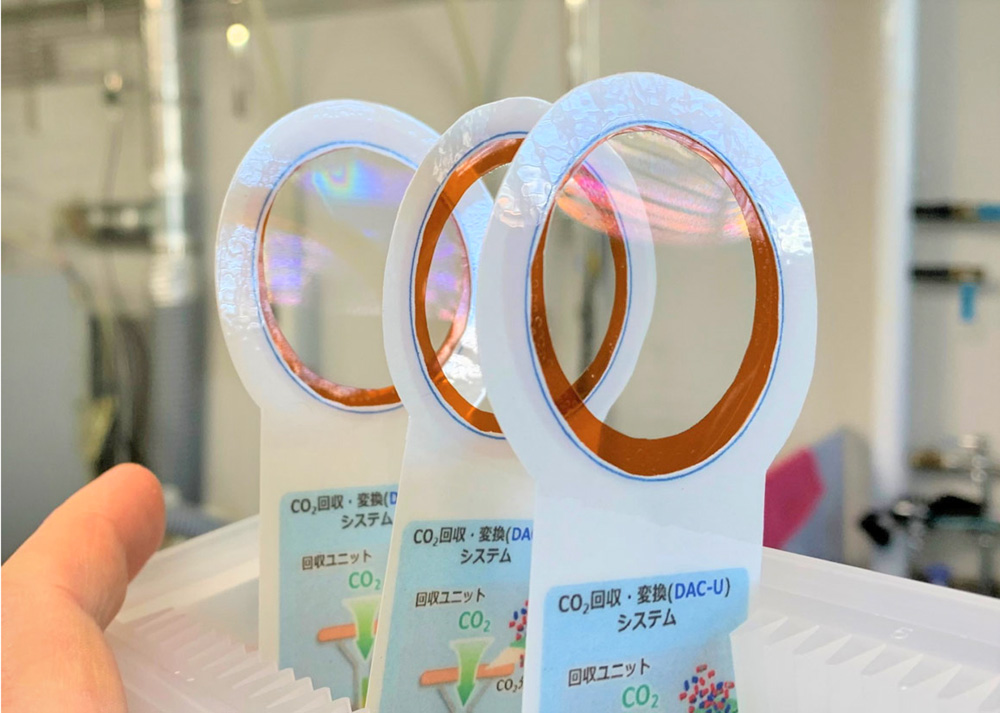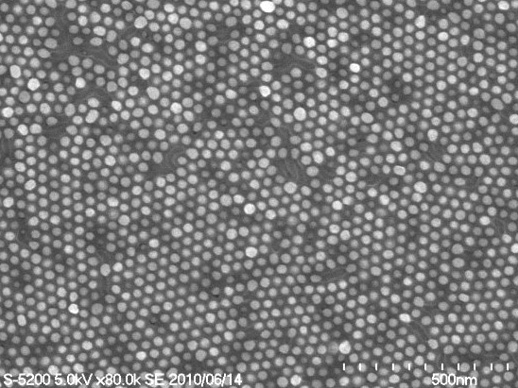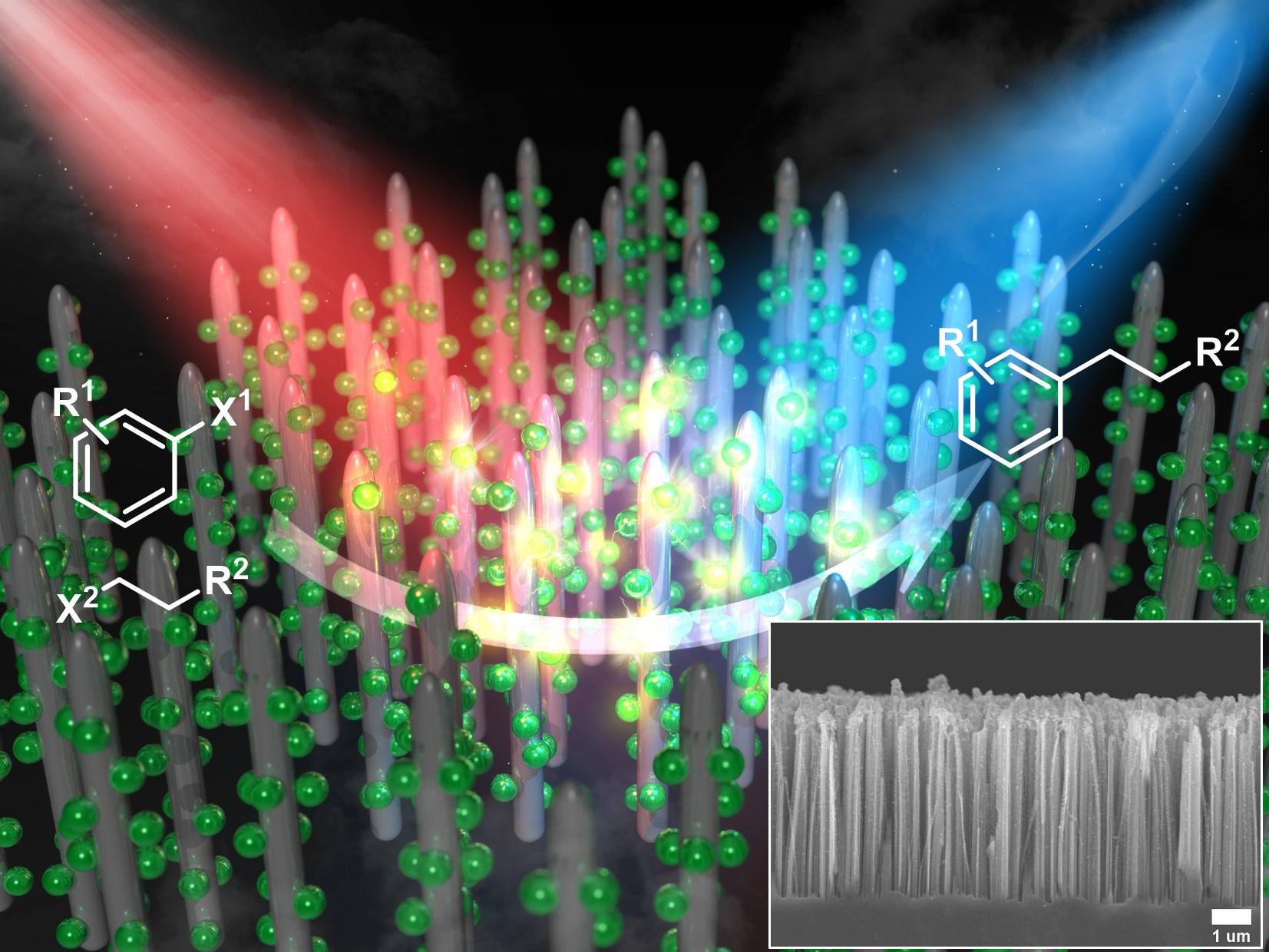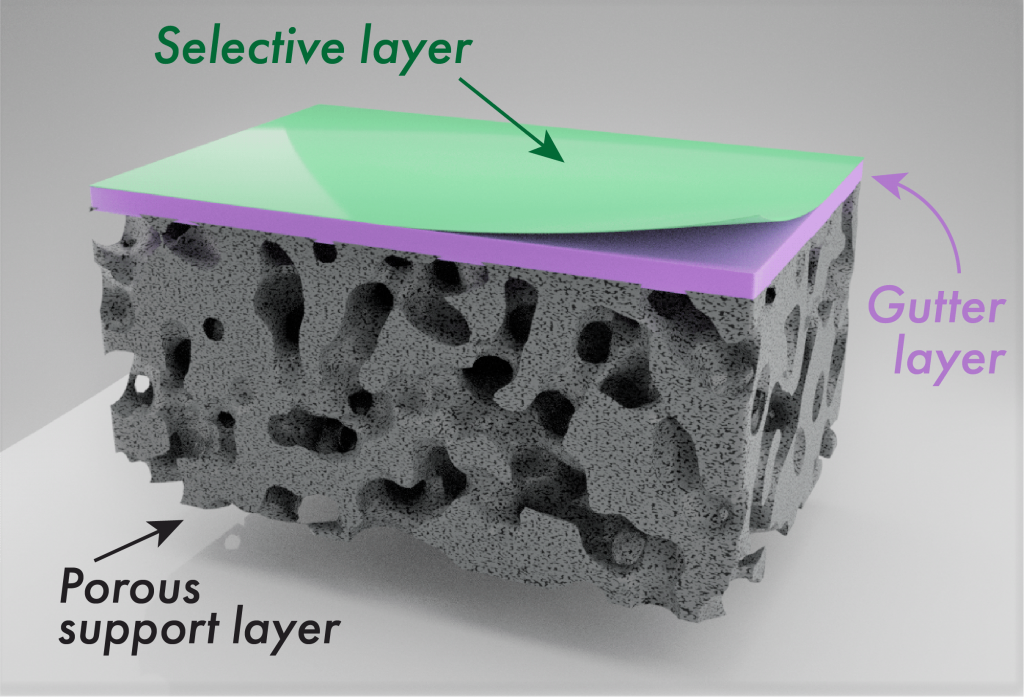Research
Scroll
- home
- Research
-
Nanomembranes for capturing CO₂ directly from the atmosphere

Photo of the large and free-standing nanomembranes –
membrane with a thickness of a few hundred nanometers and a diameter of several centimeters (aspect ratio of ~105)With the development of human society, a massive amount of carbon materials, including fossil resources, have been consumed. From the perspective of mass transfer, carbon materials are mined from underground, converted in society, and dispersed unilaterally into the atmosphere as carbon dioxide (CO₂). As a result, the concentration of CO₂ in the atmosphere rises significantly, causing global warming and consequent climate change. Recently, a technology called Direct Air Capture (DAC), which captures CO₂ directly from the atmosphere, has been attracting attention to solve this problem. Given the ubiquity of the atmosphere, the concept of ubiquitous carbon capture (ubiquitous CO₂ capture) is essential for the DAC process.
In order to realize this new concept, we are developing separation membranes that can capture CO₂ from the atmosphere. In particular, we are focusing on large nanomembranes, which are free-standing despite their thickness on the order of nanometers, and whose planar size is sufficiently large compared to their thickness. These membranes show unique characteristics in the thickness direction due to their nanometer or molecular size, but their planar size is large enough to manipulate by hand. In other words, it can be called “hand-operatable nanomaterials. Using this unique nano-membrane technology, we have fabricated an extremely thin separation membrane with a thickness of about 30 nm and have succeeded in selectively permeating CO₂. In addition, this membrane has the highest CO₂ permeance, more than 20 times higher than the CO₂ permeances reported in the world so far. With this high permeances, the feasibility of direct air capture by separation membrane (membrane-based direct air capture), which was considered impossible until now, has been increased, and the first step toward ubiquitous CO₂ recovery has been taken. -
Large-area light-harvesting interface

Scanning electron microscopy image of the array of silver nanoparticles uniformly fabricated on the silicon wafer substrate demonstrating the localized plasmon resonance under light irradiation
Sunlight is an energy source that falls from the sky and is ubiquitous on the earth. Efficient harvesting of this sunlight is another direction in which we are aiming. In our lab, we also research the fabrication of large-area surface nanostructures that exhibit characteristic photoresponsive properties by precisely controlling ordinary materials’ surface structure and size at the nanometer level. To utilize the unique properties of nanostructures in the real world, we believe that it is also essential to fabricate them with significantly larger areas. In our lab, we succeeded such fabrication. For example, we have manufactured the light-harvesting nanofin arrays and cylindrical nanopillar arrays. In addition, we have recently focused our efforts on the unique photoresponsive property of noble metal nanoparticles, called localized plasmon resonance, and have been studying the fabrication of large-area two-dimensional arrays of these nanoparticles and their applications. In particular, when a pair of noble metal nanoparticles spaced with a few nanometer gaps is irradiated with light, the plasmon resonances generated in each particle interact to form a powerful enhanced electric field between the particles. Reactions that cannot occur with ordinary light irradiation can be implemented within this enhanced electric field, for instance, ultra-high sensitivity sensing of molecules and two-photon absorption. Recently, we have been conducting collaborative research on creating new photoconversion interfaces by combining two-dimensional arrays of noble metal nanoparticles with molecular systems.
research-image
Scanning electron microscopy image of the array of silver nanoparticles uniformly fabricated on the silicon wafer substrate demonstrating the localized plasmon resonance under light irradiation -
Design of new functional interfaces utilizing nanowire array

We are also interested in the design of highly-ordered and periodical nanostructures. Recently, we have been focusing on vertically-aligned silicon nanowires. Specifically, we focus on the fabrication of high-density silicon nanowire arrays. Each nanowire is less than a few tens of nanometers wide and more than a few micrometers long, and stands vertically on a silicon substrate at a distance of a few tens of nanometers. The gap structure between the wires on the surface of this substrate can be regarded as a “confined nanospace” of only a few tens of nanometers. In recent years, chemical reactions in the nanospace, referred to as ” nanoreactors,” have been attracting attention, and the gaps in this unique nanosilicon structure (“nanopin holders” or “nanokenzan” in Japanese) can also be reaction spaces. Furthermore, nanoparticle catalysts can be deposited on the surface of the silicon wires. Therefore, this unique surface can be considered as a “nano-reaction space. Recently, we have realized organic conversion systems that perform various organic reactions with high efficiency.
In addition, the nanopin holder (“nanokenzan”) structure does not reflect light, so it is possible to fully utilize the incident light without energy loss. We are currently exploring this possibility as a collaborative research for the creation of a new photo-functional interface. -
Thin film composite nanomembranes

Schematic image of the thin film composite membrane with three functional layers as
indicated in picture and scanning electron microscopy image of the actual
membrane with similar structure.The most significant reason for anthropogenic climate change is the continuous emission of greenhouse gases into the atmosphere. Currently, power plants are emitting a huge amount of CO₂, where is main CO2 emiss site. Membrane separation is now considered as a promissing technology to separate CO₂ from flue gas. Specifically for the CO₂ capture in the thermal power plants, we need to separate CO₂ from nitrogen. In our lab, we are developing new membranes that have excellent seperation performance by employing the approach of selective layer thinning and membranes surface modification. We are now researching new membranes to achieve current challenging target toward large-scale gas separations.